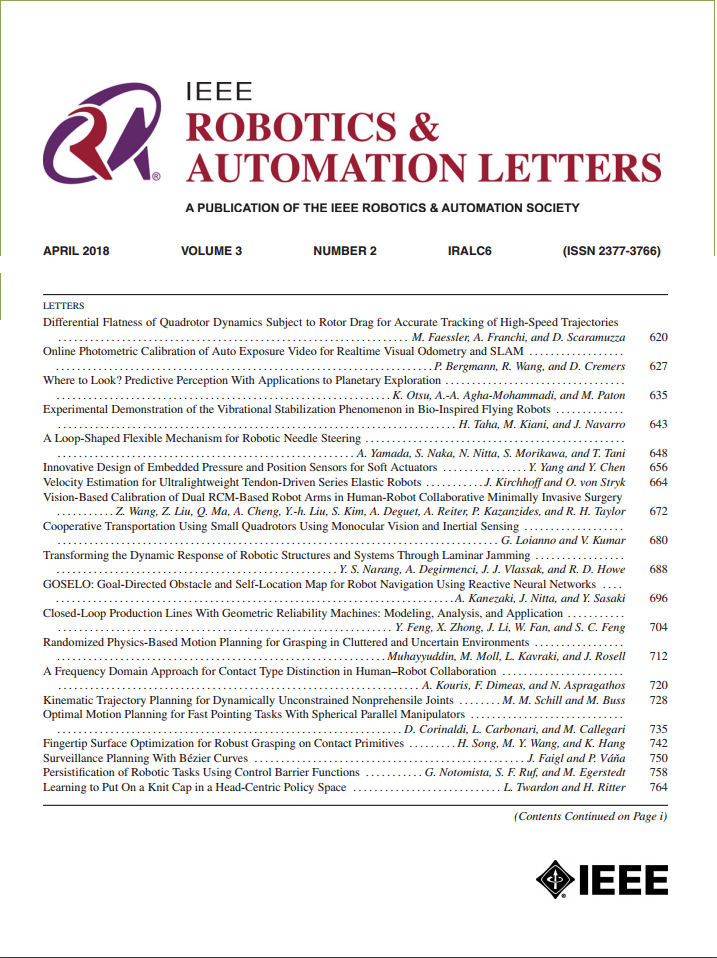Shaping Collective Behaviors in Swarm Robotics Through Probabilistic Motion Decision-Making
IF 5.3
2区 计算机科学
Q2 ROBOTICS
引用次数: 0
Abstract
Swarm robotics exhibits scalable and adaptive collective behaviors, providing an effective solution for complex tasks in real-world applications. However, reliance on velocity and global positioning information of neighbors limits the practical deployment of swarm robots. In this letter, we propose a sensorimotor-based swarm model that directly maps first-person visual perception to motion decisions through probabilistic decision-making. Based on numerical simulations, we find the emergence of flocking, milling, and swarming behaviors without explicit velocity alignment and positional interactions. In addition, we investigate the effectiveness of the proposed swarm model under non-omniscient perception. Moreover, we show that probabilistic motion decision-making enhances the resilience of group coordination under sensory noise. Finally, we achieve flocking, milling and swarming behaviors in a swarm of 50 real robots under motion noise disturbance and simulated visual constraints, highlighting the potential of the proposed swarm model in real-world tasks.基于概率运动决策的群体机器人群体行为塑造
群机器人表现出可扩展和自适应的集体行为,为现实应用中的复杂任务提供了有效的解决方案。然而,依赖于邻居的速度和全球定位信息限制了群体机器人的实际部署。在这封信中,我们提出了一个基于感觉运动的群体模型,该模型通过概率决策直接将第一人称视觉感知映射到运动决策。基于数值模拟,我们发现在没有明确的速度对准和位置相互作用的情况下,出现了群集、铣削和蜂群行为。此外,我们还研究了所提出的群体模型在非全知感知下的有效性。此外,我们还证明了概率运动决策增强了群体在感觉噪声下的协调弹性。最后,我们在运动噪声干扰和模拟视觉约束下,在50个真实机器人的群体中实现了群集、铣削和群集行为,突出了所提出的群体模型在现实世界任务中的潜力。
本文章由计算机程序翻译,如有差异,请以英文原文为准。
求助全文
约1分钟内获得全文
求助全文
来源期刊

IEEE Robotics and Automation Letters
Computer Science-Computer Science Applications
CiteScore
9.60
自引率
15.40%
发文量
1428
期刊介绍:
The scope of this journal is to publish peer-reviewed articles that provide a timely and concise account of innovative research ideas and application results, reporting significant theoretical findings and application case studies in areas of robotics and automation.
 求助内容:
求助内容: 应助结果提醒方式:
应助结果提醒方式:


